Flight Club
A Conversation with Benedikta Unter Ecker
Another week, another story from the archives of The Motoring Journal. This one was a joy to put together and certainly one of the most unique experiences I’ve ever had. In fact, since the day I hopped in Benedikta’s plane to fly out to El Mirage Dry Lake, my brain has been wired differently when it comes to flight. There is just no substitute for riding in a small aircraft. All the adjectives in the world don’t do the feeling justice. It’s simply something you have to experience firsthand to understand and I recommend that you do, especially if it’s with a naturally gifted pilot like Dita.
Cheers - AM
This story originally appeared in Issue Three of The Motoring Journal:
Since the days of my youth, I’ve had vivid dreams about flying planes — mostly WWII-era ones, with the occasional biplane thrown in for good measure — but until I recently went up with 27 year-old Benedikta Unter Ecker in her 1963 Mooney M20C, I’d never been in an aircraft smaller than a Viking Twin Otter 400S seaplane. “Dita”, as her friends call her, had put together a fun little flight plan for us, one that was typical for her, but totally out of the ordinary for me. We would depart from Van Nuys Airport, out in The Valley, and fly east to El Mirage, a dry lake bed. I’ve been out to El Mirage many times with cars for the purpose of taking otherworldly photos and going fast in a straight line. Doing donuts and drifting is prohibited at El Mirage, and for good reason, too: Ruts are dangerous not only to people doing high-speed runs in vehicles and on motorcycles, but also to pilots like Dita landing their planes out there.
Yes, you read that right: Dita and her friends land their planes out on this dry expanse of land. In fact, they fly all sorts of places just to hang out for a bit, fly in formation, and then grab lunch at some small municipal airport. For our outing, we did all of the above, and I ended up with a bonus ride in what is now the smallest aircraft I’ve been in, a Van’s Aircraft RV-6 owned, flown, and built by photographer James Lipman. Not only did I get to fly with Dita, but I also got to watch her fly from a few hundred feet away as we headed to lunch in formation. It’s hard to describe what a surreal experience being in such small aircraft is. The best I can do is to say that when viewed through the windshield, it looks fake. Fake in the sense that the world beyond the nose of the plane is green screen and you’re on a very realistic carnival ride. Of course, then you look out the side window at the world below and it becomes plenty real. I haven’t stopped thinking about it since the day of the flight, and, as you might imagine, the dreams of flying have been a little more frequent and even more vivid. Before going up with Dita, my thoughts on getting my pilot’s license were just out in the ether, but since that flight, they’ve begun to take shape. Naturally I wanted to sit down with her to get into the particulars of how it all came together for her at such a young age, as well as to get a look at the state of aviation through her eyes.
“Trust is a key element of the community, and that trust is built in a number of ways, the most dramatic probably being when pilots fly in formation, which says that one pilot has total confidence in another’s skills. If you’re trustworthy in the air, that means you’ve done the work on the ground.”
AM: First and foremost, I’d like to have you explain how you got into aviation, because the fact that you’re both very experienced and quite young compared to the field of participants overall is really interesting.
DE: The reason I got into aviation was because I was discontent with following a traditional education and career path. I lived on Maui during high school and had no idea what I wanted to study when I graduated. I ended up enrolled at the University of Malta, studying psychology, and was traveling around Europe, learning mostly about my family history, given that my father is German and [my] mother is Portuguese, and then ended up traveling in Africa as well. It quickly became clear that the direct interaction with people of different cultures inspired me far more than being in a classroom did. So, one day while visiting Tanzania, I became acquainted with some young bush pilots who made a living transporting medicine and medical personnel to out-of-reach villages. The pay was ridiculously bad and the job was very challenging because of the awful conditions around the airfields. Landing strips were either unkept or nonexistent, and sudden storms are the norm, but the expertise and level of competence the pilots possessed was something that really made an impression on me.
Tanzania and Botswana are home to some of the most skillful bush pilots in the world, and my aspiration from the day I became acutely aware of that was to attain that level of excellence. I dropped out of college, returned to the U.S., and, after quite a bit of research on how to get started in general aviation, I enrolled in a school to get my private pilot’s license. After completing my first license, I bought a plane to continue my training, and, as luck would have it, I ran into the man who would become my mentor. He has many, many years of experience and was a real stickler for competence. He offered me a lot of guidance not only on a technical level, but also by showing me how to navigate a world that is dominated by men and often biased against female pilots.
AM: That’s a good segue into talking about addressing diversity in aviation, which I know you’re very passionate about primarily because you’re vocal about it on social media. What steps do you think need to be taken in order to make it a more welcoming space for not only women and other historically underrepresented groups, but for young people in general?
DE: Well, the need for greater diversity in aviation is unquestionable. To start with gender diversity, this is an industry where only 8.5% of all pilots are female. That certainly has to change, and at a foundational level it begins with shifting the perception of certain professions as better suited for men than women. This outdated division of tasks is a fallacy that not only reinforces stereotypes, but also traps human beings in gender-specific roles that make little to no sense.
To bring more equality to the field, there needs to be much more investment at a high level to promote female participation. Exposure is a big part of this as well; by showing more female pilots in broadcast media, films, airline advertisements, et cetera, young women would be more likely to think they could do this job. Female-specific scholarships are another important element where great strides could be made, but perhaps more than anything, just promoting a safe work environment where women feel welcome in the flight deck and don’t have to work so hard for their competence to be acknowledged. There was a time when women held a very relevant and visible place in aviation. Pioneers such as Louise Thaden, Bessie Coleman, Pancho Barnes, Marvel Crosson, and, of course, arguably the most famous pilot of all time, Amelia Earhart, left their mark on the industry and on history. However, the face of aviation has been predominantly that of a straight white male of a certain age since the mid-20th century. Beyond gender diversity, it’s heartening that associations such as the NGPA [National Gay Pilots Association] are out there vocally supporting the LGBTQIA+ community, and within the younger generation of pilots, integration does not seem to be as much of an issue. I go to airports such as Santa Paula, California, and see super-talented pilots supporting each other regardless of gender, race, or sexual orientation because, at the end of the day, what matters is individual competence.
“Since becoming a pilot, I’ve become much more organized with regard to my time, more analytical with my thinking, and overall more curious about science and engineering. The action and sense of adventure that come with being a pilot actually made me more open to learning in a classroom environment, which, again, is a place I would hope all people could find their way to.”
I should note that there are so many older pilots that have been incredibly welcoming and supportive of the new generation and are generous with their time and knowledge, but it needs to be much more widespread in order for major change to take place across the board, especially in commercial aviation. We need an industry that better reflects the diversity within our society, and representation is the only way that happens. That’s why I see it as being crucial that we make it possible for young people from all walks of life to join the industry, because the truth is that flying is still very much an elite activity. Flight school, renting planes, paying for fuel, buying equipment, et cetera, is very cost prohibitive. While there are some scholarships and initiatives out there, there aren’t nearly as many financial-aid options as there are for traditional higher education, so that’s one of the most important areas where investment needs to be made. Much could be done here with social media, given how naturally spectacular aviation photography and videography can be. The awareness of aviation as a career path can grow exponentially with young pilots getting together to share their outings and experiences, but unless there’s an approachable infrastructure put in place that has affordability at the center of it, the awareness gained doesn’t amount to much in terms of increased diversity.
AM: Clearly you’re very passionate about the industry overall in addition to being passionate about just the act of flying. What is it about the latter that fuels the former? What has aviation given you that you hope to share with those who might be interested in a career in the field?
DE: Aviation has brought me to amazing places and allowed me to meet incredibly talented people, but, above all, the first time I entered a plane, I was unknowingly embarking on a lifelong journey towards self-actualization. All people should not only be able to, but be encouraged to, go on the same journey. Since the first day of training, I’ve been gaining qualities that have shaped not only who I am professionally, but how I interact with the world as a citizen of it. It drove home the importance of community in ways I previously didn’t understand, because, in general, aviation pilots tend to be collaborative, from small stuff like lending a helping hand with maintenance issues, or flying for someone when their plane is down, to bigger things such as sharing emergency situations with each other so that other pilots can learn from each other’s mistakes. Trust is a key element of the community, and that trust is built in a number of ways, the most dramatic probably being when pilots fly in formation, which says that one pilot has total confidence in another’s skills. If you’re trustworthy in the air, that means you’ve done the work on the ground. Since becoming a pilot, I’ve become much more organized with regard to my time, more analytical with my thinking, and overall more curious about science and engineering. The action and sense of adventure that come with being a pilot actually made me more open to learning in a classroom environment, which, again, is a place I would hope all people could find their way to.
Follow Benedikta’s travels on Instagram @ditafromhawaii



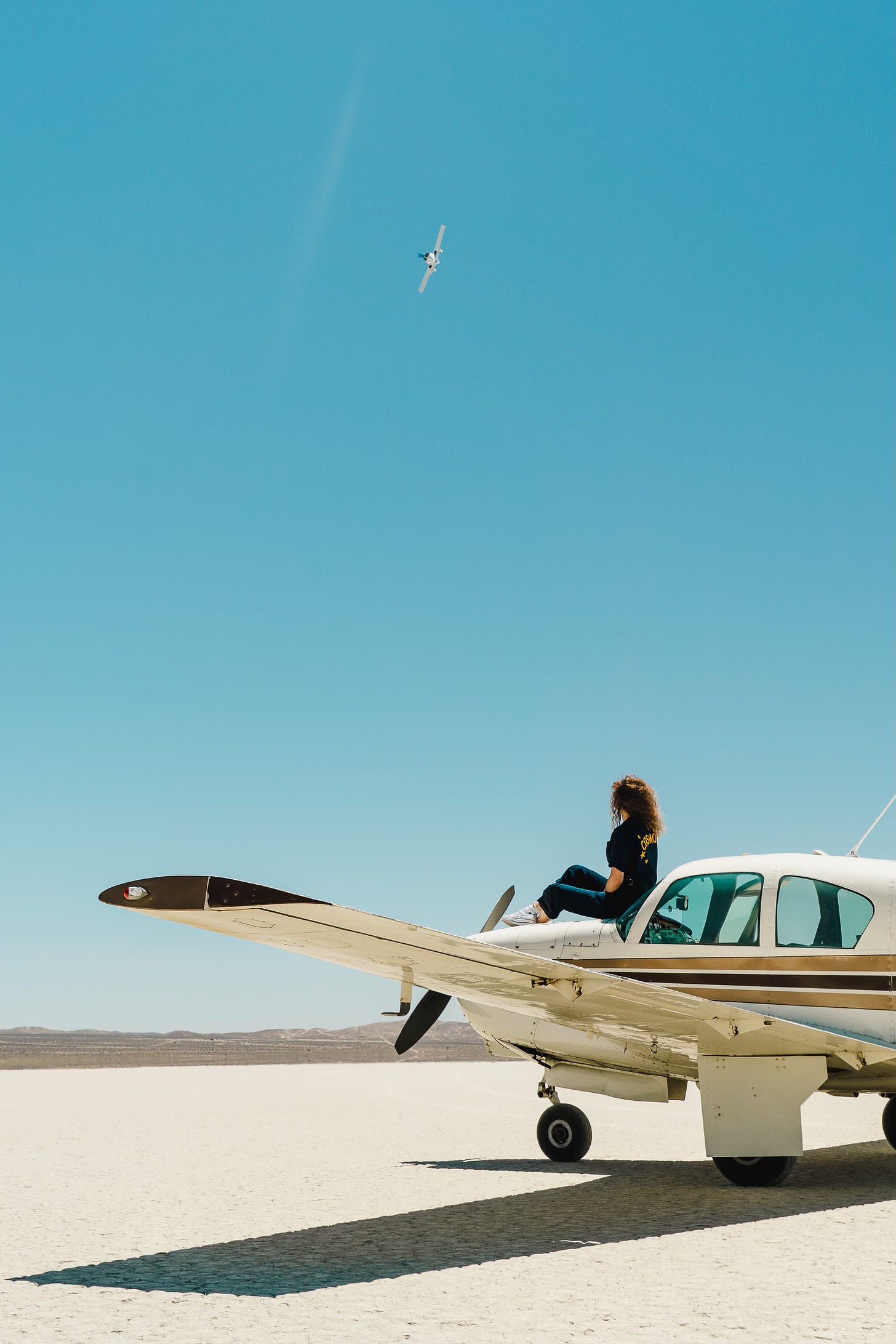
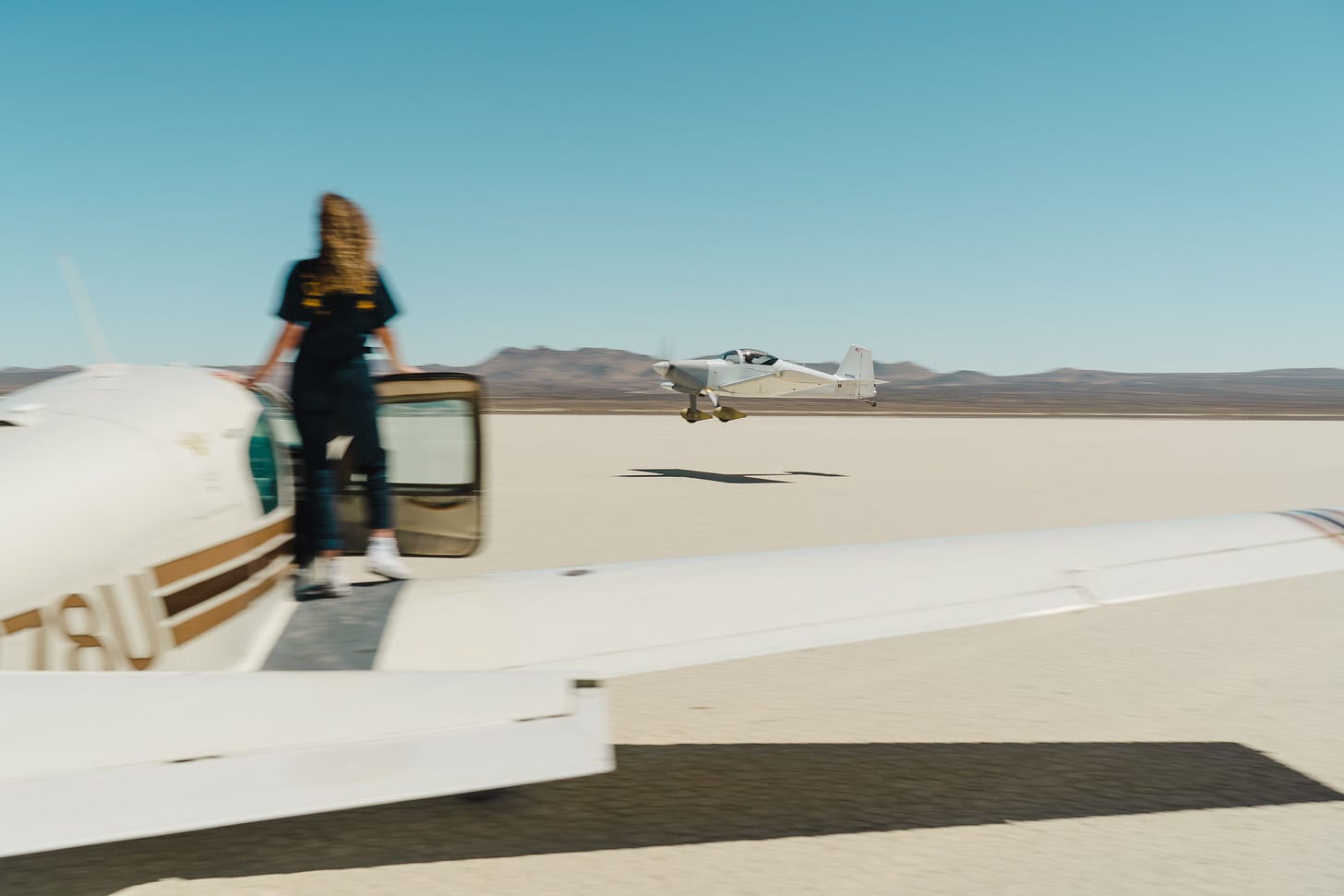
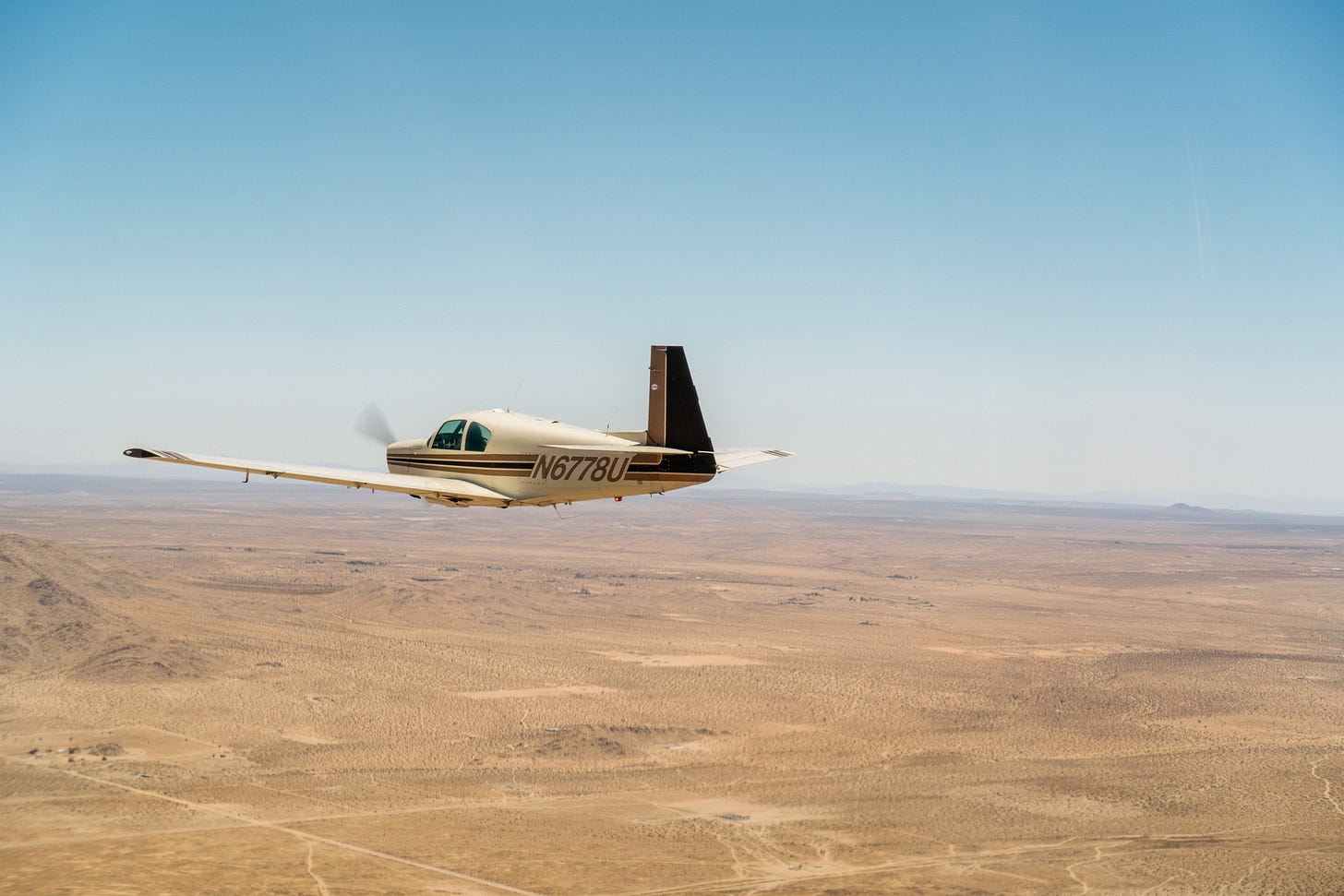


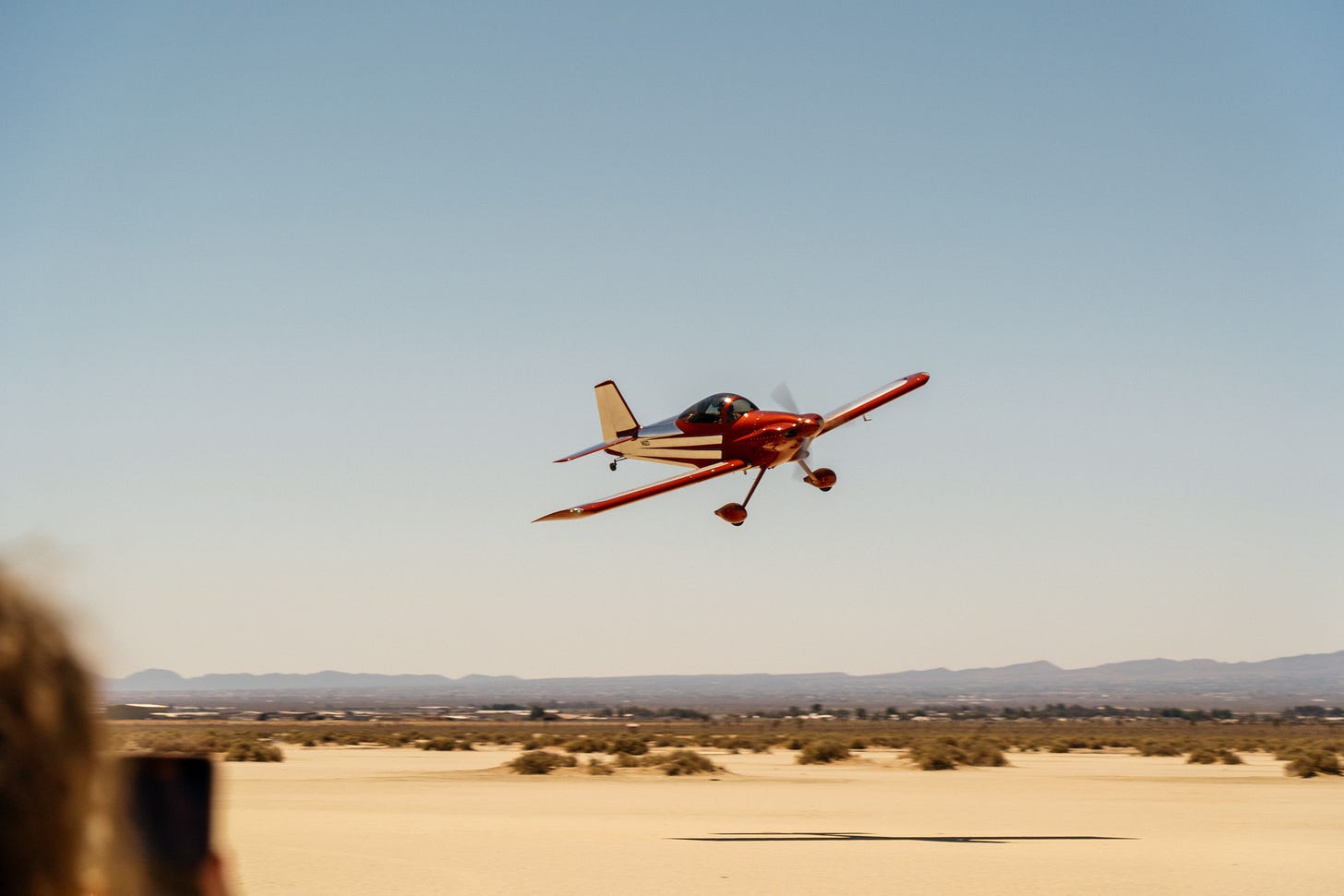
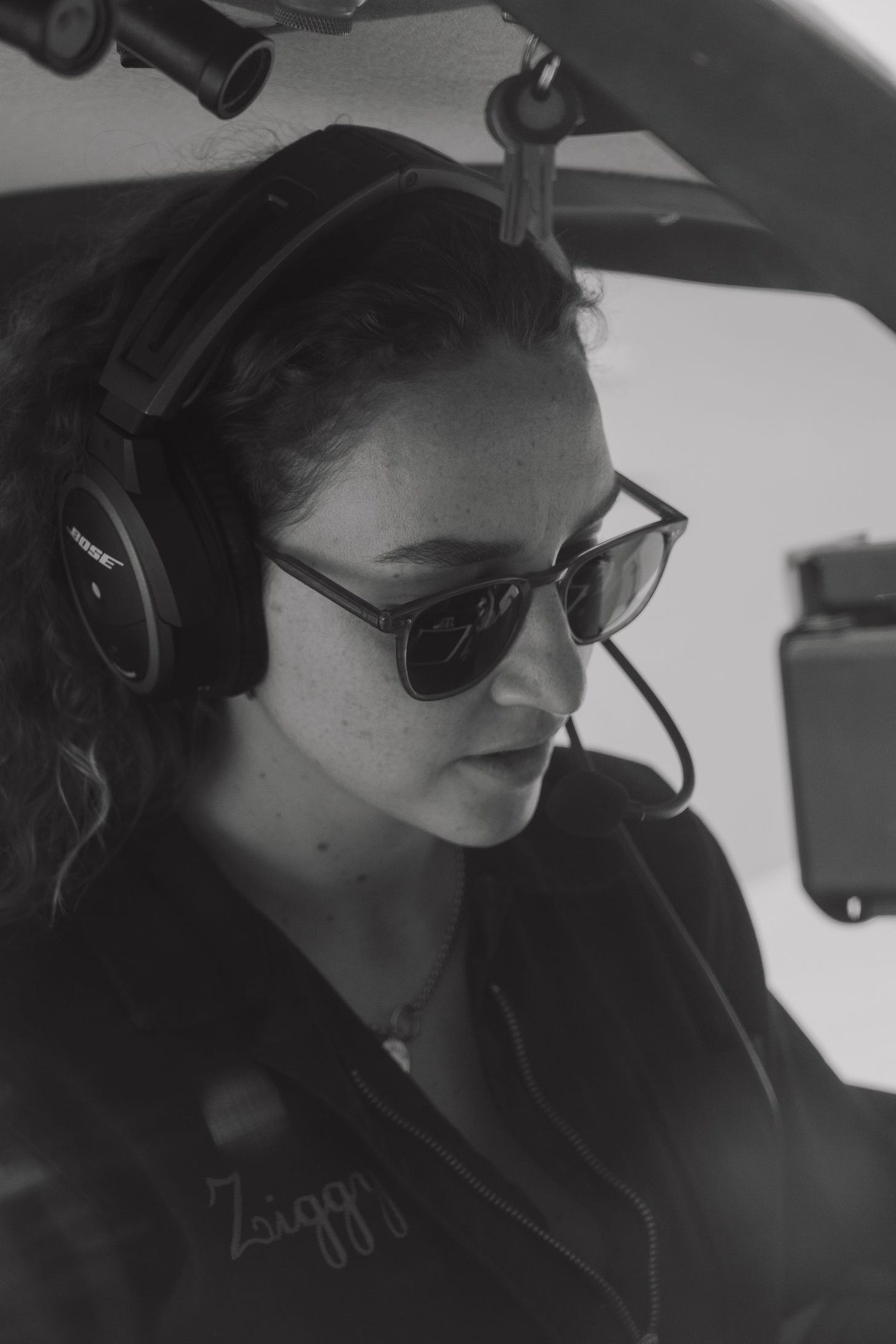
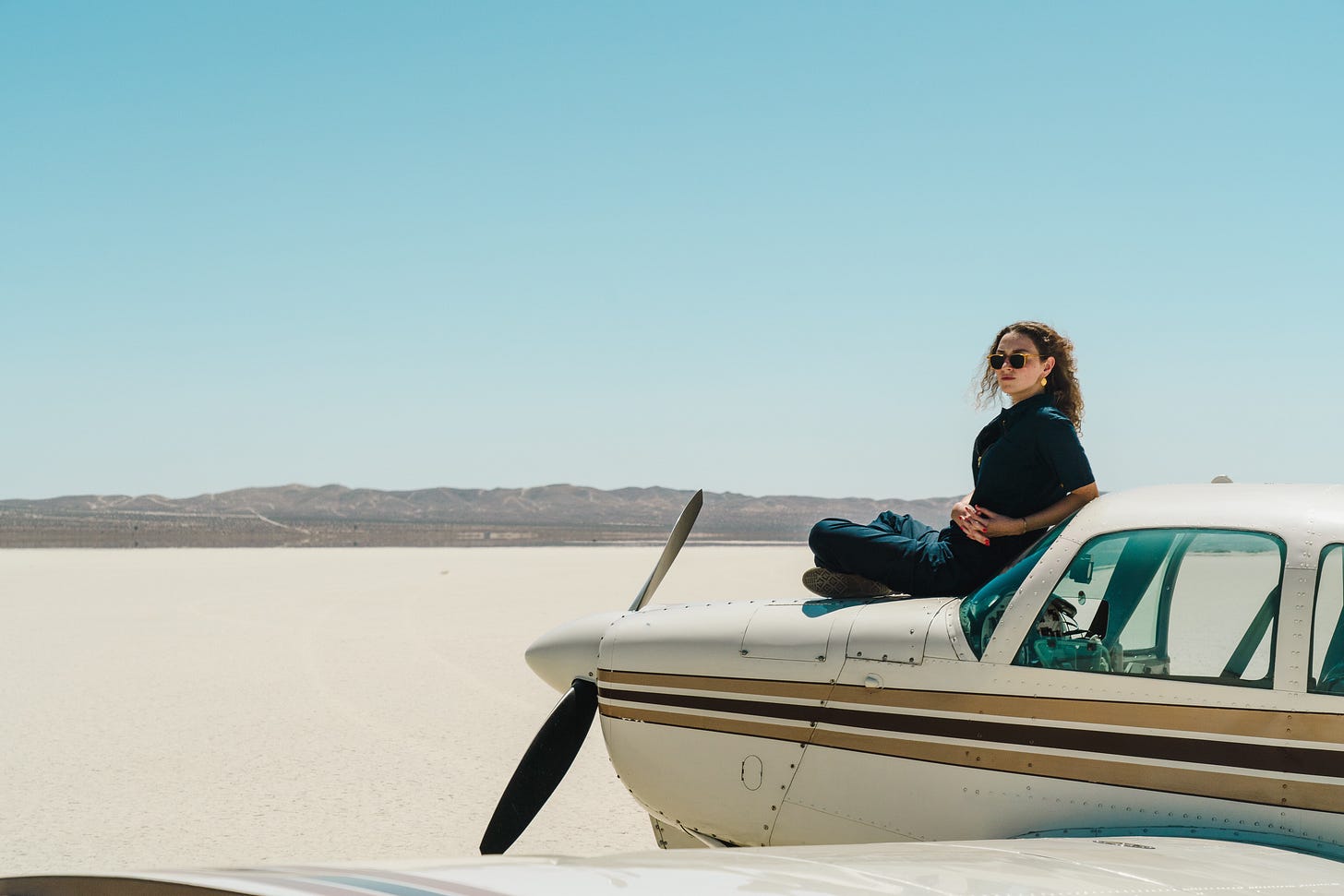
Love this long article.
Miss the mag, but love this online format you have chosen now.